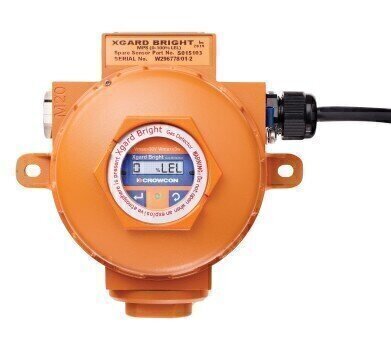Gas Detection
Meet the next generation of flammable gas detection
Dec 02 2020
Molecular property spectrometer (MPS™) sensors are arguably the biggest breakthrough in flammable gas detection for several decades. Not only does MPS™ drive up the speed and accuracy of gas detection – and therefore improve safety – but it also solves problems with traditional (pellistor and infra-red) gas sensors that have plagued users for years. What is more, MPS™ drives down maintenance and cost of sensor ownership, and provides a great solution wherever multiple gas hazards may occur.
With MPS sensors now available for the fixed detector format, this article explores the new technology and what it means for anyone needing to detect flammable gases.
What is MPS™ and how does it differ from IR/pellistor options?
MPS gas detection was developed at the University of Nevada, and is currently the only type of gas sensor that can detect multiple flammable gases – including hydrogen – and gas mixtures simultaneously with a single sensor. An MPS™ sensor does not need calibration, bump testing or indeed any maintenance throughout its lifespan (which usually exceeds 5 years), and cannot be ‘poisoned’ by local conditions or contaminants.
All of these qualities make MPS very different to conventional forms of flammable gas detection.
Until MPS™ came along, flammable gases could only be detected using IR or pellistor sensors, with an individual sensor needed per gas (so, multiple conventional sensors are required in multi-species environments). What is more, IR detectors cannot ‘see’ hydrogen – which is increasingly prevalent – leaving pellistors the only option in many places.
Pellistors have lots of advantages, but also drawbacks. Pellistor sensors are prone to ‘sensor poisoning’, whereby the sensor is damaged by conditions (e.g. extreme temperature) or pollutants, and must be replaced each time this happens. In some settings, this becomes very costly and if operators do not keep a very close eye on their sensors, the risk of gas hazards may increase.
Conventional sensors require calibration and bump testing, to ensure accuracy and detect problems before they can increase risk. Calibration, bump testing and indeed any types of maintenance can require personnel to enter hazardous areas, and are costly in terms of downtime, parts and labour.
Furthermore, with IR/pellistor sensors, the only reliable readings are those for the gas each sensor is calibrated for. They may give incidental readings for other gas hazards, but these can be inaccurate and may generate false alarms. In multi-species environments, this can be dangerous and/or costly.
How does MPS™ solve the problems of flammable gas detection?
Unlike conventional sensors, MPS™ detectors:
- Require no maintenance throughout their extensive lifespan (which reduces cost of ownership)
- Increase safety in multi-species environments by reliably detecting multiple gases and mixtures
- Are self-monitoring (if there is a problem with the sensor, the detector will generate a report to warn the owner)
- Cannot be poisoned (reduces cost of ownership, enhances safety)
- Can detect multiple flammable gases (including hydrogen) simultaneously, no correction factor required.
The benefits for users of MPS™ include:
- Single sensor can detect mixed and multiple flammable gas hazards including mixtures
- No need to calibrate
- Greater efficiency and cost-effectiveness: single sensor detects multiple threats in multi-species settings, increasing safety while reducing total cost of ownership
- No need to replace poisoned sensors
- Long sensor life
- Excellent alternative to pellistors for hydrogen detection, particularly in harsh environments.
MPS™ technology is very new, but the world’s first MPS sensor for a fixed flammable gas detector has just been launched. Given the many benefits of this breakthrough technology, it can only be a matter of time until it becomes the natural choice for flammable gas detection.
Digital Edition
IET 34.2 March 2024
April 2024
Gas Detection - Biogas batch fermentation system for laboratory use with automatic gas analysis in real time Water/Wastewater - Upcycling sensors for sustainable nature management - Prist...
View all digital editions
Events
Apr 30 2024 Melbourne, Australia
Apr 30 2024 Birmingham, UK
May 03 2024 Seoul, South Korea
May 05 2024 Seville, Spain
May 06 2024 Minneapolis, MN, USA




















